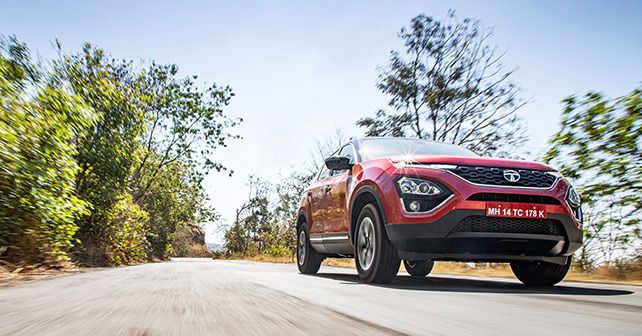
This Harrier update gives you more power, an automatic gearbox, a panoramic sunroof & better ergonomics – all the things it should have had in the first place. But, as they say, better late than never!
Let’s wind back the clock back a couple of years. Tata Motors managed to make a lot of people curiously interested when it unveiled the H5X concept at the Auto Expo 2018. In January the next year, the manufacturer revived this interest by launching the production-spec iteration, called the Harrier, at an extremely competitive price.
And while Tata’s flagship was impressive in terms of value for money, space, and road presence, it did have a few problems – like the absence of an automatic transmission, the need for more power, and some serious ergonomic issues.
Now, Tata has now brought in the 2020 Harrier, which addresses these issues.
Same ‘ol:
The 2020 Harrier looks identical to its predecessor, except for a few minor changes all around. The bumper is now finished in black, in contrast to the silver-finish of the faux skid plate. The ORVMs have been redesigned and made smaller, and there’s a new set of diamond-cut alloy wheels. Chrome elements all around the car add a sense of contrast, especially in the calypso red shade. The rear of the Harrier remains more or less unchanged.
The interior of the Harrier is not very different from the model that was launched last year. The overall layout of the dashboard remains the same – it still has a 7.0-inch TFT display and an 8.8-inch central touchscreen. The infotainment screen is intuitive to use but could have been wider.
There are a few small changes, which, interestingly, have done wonders in improving the overall ergonomics of the car. For instance, in the 2019 Harrier, the USB port under the climate control was tucked in too far below the centre console. Fortunately, now it has been brought forward, making it easy to use without contorting your body. There are also two more USB ports – one in the central armrest and another for the rear passengers.
The Harrier now also gets a panoramic sunroof, which makes the cabin feel airy. The massive ORVM on the last year model really hampered visibility from the driver seat, but the smaller one on the 2020 iteration has addressed the issue. Other changes include an electrically adjustable driver’s seat and auto-dimming IRVM. In terms of space and comfort, the new Harrier continues to be as impressive as the model before it.
Power up:
The 2020 Harrier has the same 2.0-litre diesel engine as before, however it has been updated to meet BS-VI norms. The bigger change, however, is in its power output. While the outgoing model made 138bhp, the new one makes 30 horses more.
The torque rating remains unchanged at 350Nm. The initial turbo lag is still noticeable, but once past that, the car pulls strongly and cleanly in its mid-range. In terms of outright acceleration, the Harrier feels quicker and is more comfortable than before in maintaining high speeds.
The new Harrier also has a Hyundai-sourced 6-speed torque converter. In drive mode, the shifts are quite smooth as long as you are driving sedately – It doesn’t like to be rushed. While driving aggressively, you do feel the need for quicker shifts. Driving in manual mode is marginally better, especially during upshifts. But, then, in this case, shifts through the lever feel quite rubbery.
We also got a chance to drive the 6-speed manual variant. And the first thing you notice about this one is the extreme lightness of the clutch. The gearbox shifts smoothly, and throws are short and precise. In fact, it puts the power down a lot better than the automatic and, in that sense, it does more justice to the increased output.
In terms of ride quality, the 2020 Harrier feels exactly like the old one. It tackles undulations and broken tarmac with great poise, especially when you are driving at high speeds. At lower speeds, you do feel some jerks and shudders inside, and sometimes, they are accompanied by a cringe-worthy thud.
Although around corners, the overall body control is good, the steering does steal some of the fun. It weighs up nicely, but there’s a sense of vagueness to it – which takes away some of the confidence. Plus, the braking performance could have been better.
In addition to the front airbags and ABS with EBD, the Harrier also gets ESP as standard. While the Harrier does have a long list of safety features, we can’t help but wonder why it hasn’t been put through an NCAP test, especially when the newly launched Altroz has already been tested.
Better than before?
The 2020 Harrier is a good example of how small things can make a huge difference. Repositioning the USB port, the smaller ORVMs, and the addition of a sunroof and an electric IRVM are a sign that Tata is listening keenly to its customers, which is a great thing.
As far as the engine goes, the 170bhp tune is definitely a better fit for this car, especially with the manual transmission. The automatic does well in city conditions, but when driving aggressively, the shifts seem to lack urgency. Overall, however, all the changes to the 2020 Harrier signal a step forward in the right direction. And there’s no doubt that the new Harrier makes a stronger case for itself than the old one.
- 2020 Tata Harrier
Transmission: 6-speed AT and MT / Front-Wheel Drive
Fuel: Diesel
Power: 168bhp @ 3,750rpm
Torque: 350Nm @ 1,750-2,500rpm
Price: ₹18.85 lakh (MT) and ₹20.15 lakh (AT) (Ex-Showroom)
X-Factor: Changes in all the right areas iron out the chinks in the Harrier’s armour and make it a much better buy than before.
Pros
• Improved ergonomics
• Light clutch action
Cons
• Braking performance
• Vague steering

Also Read:
Automatic SUV spec comparison: 2020 Tata Harrier vs New Hyundai Creta vs Kia Seltos vs MG Hector



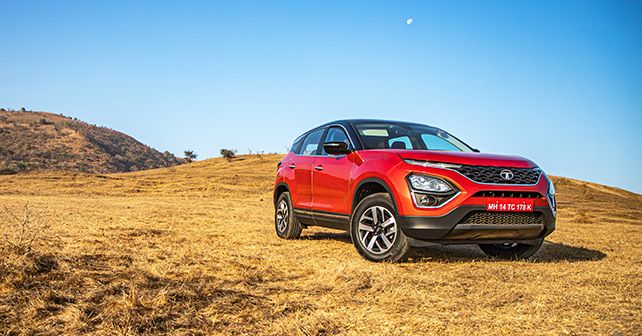
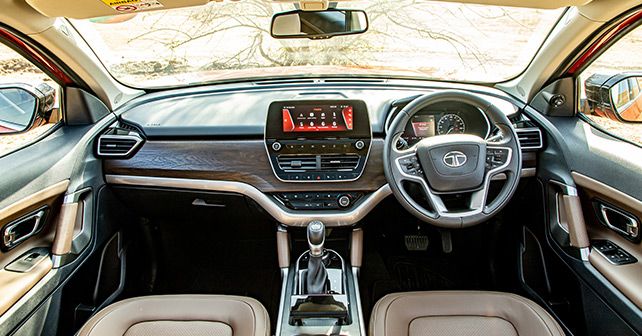
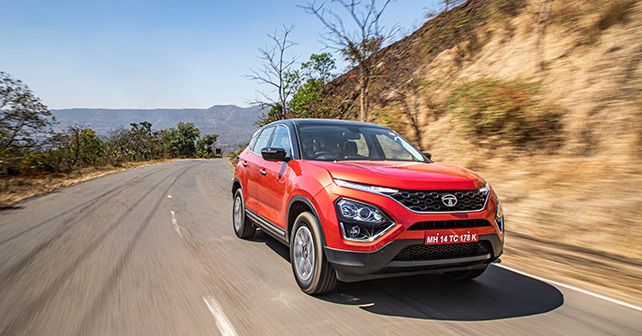
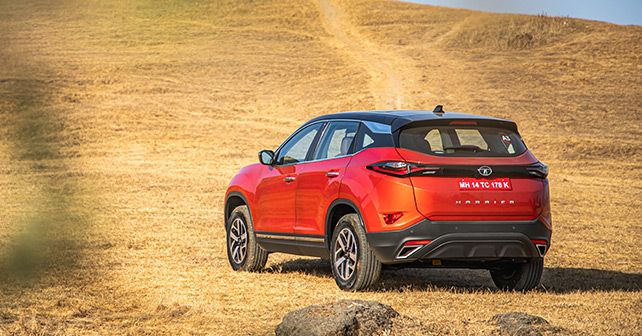
![Tata Harrier [2019-2023] Tata Harrier [2019-2023] Model Image](https://static.autox.com/uploads/cars/2019/01/tata-harrier-23-jan-2019.jpg)



















1 Comment
For top model few things are missing. Floating indicators, interior ambient light, wireless charging and if possible voice command to do simple task like opening sunroof...etc
Reply